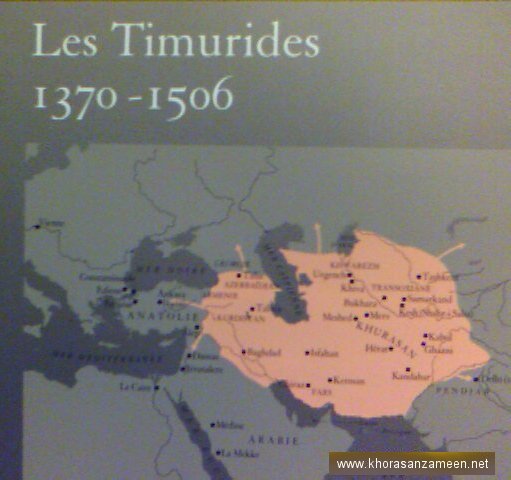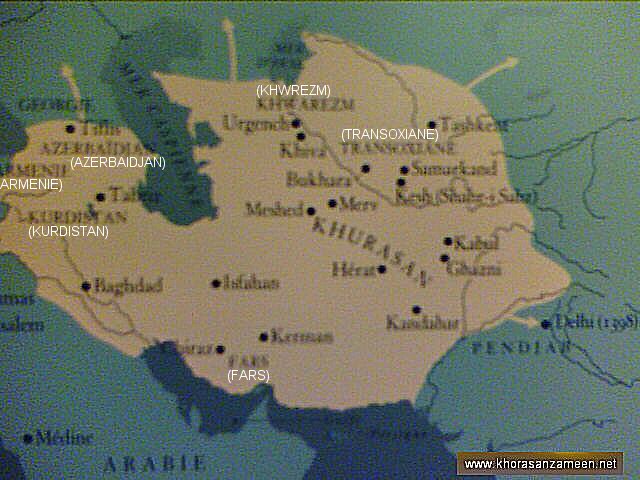Introduction
This map shows the enormous realm of the Timurid Empire 1370 - 1506. The empire was founded by Timur, born on 8th April 1336 in Kesh near Samarkand, member of turkicized Barlas tribe, a Mongol subgroup that had settled in Transoxonia. Because of an arrow-wound in the leg, he was nicknamed Timur-e-Lang or Timur the Lame, corrupted in the West to Tamerlane.
As displayed in this map, Khorasan (spelt Khurasan) makes a huge part of this empire, covering from the Oxus river (Amu Darya) regions in the north to the Arabian Sea in the south and from Indus river and gates of Panjab in the east to the east of Persia in the west.
After Timur's death his conquest were divided between two of his sons: Miranshah (d. 1407) received the western part, while Shah Rokh was left with KHORASAN. Between 1406-1417 Shah Rokh extended his holdings to include those of Miranshah as well as Mazanderan, Seistan, Transoxonia, Fars (native Persia) and Kerman, thus reuniting almost all of his father's empire, which he ruled from Khorasan. Shah Rokh also retained a nominal suzerainty over China and India. In other words Shah Rokh founded the Timurid Empire of Khorasan, with HERAT as its capital city, which lasted for a whole century, till it was overthrown by the Shaibani Uzbeks in 1506.
During Shah Rokh's reign 1405-47, economic prosperity was restored and much of the damage wrought by Timur's campaigns was repaired. Trading and artistic community were brought into CAPITAL CITY OF HERAT, where a library was founded, and the capital became the center of a renewed and artistically brilliant culture. The court of the last great Timurid, Husain Bayeqra (1478-1506) supported such luminaries as the poet Jami, the painters Mirkhwand and Khwandamir and the vizier, Mir Ali Shir.
|
| |
| |
| |
| |
|


|